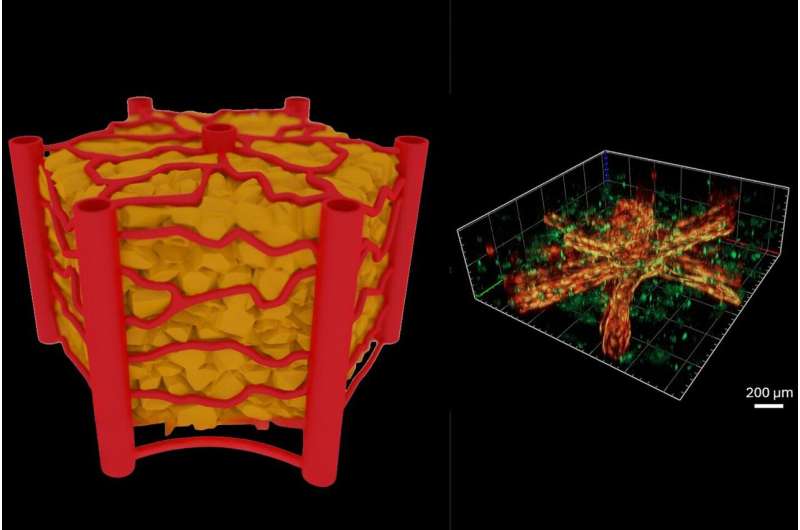However, there has been a major obstacle: Such mini-organs are incomplete without blood vessels. To facilitate systematic studies and ensure meaningful comparisons with living organisms, a network of perfusable blood vessels and capillaries must be created—in a way that is precisely controllable and reproducible.
This is exactly what has now been achieved at TU Wien: The team established a method using ultrashort laser pulses to create tiny blood vessels in a rapid and reproducible manner. Experiments show that these vessels behave just like those in living tissue. The research is published in the journal Biofabrication.
Real cells in artificial microchannels
“If you want to study how certain drugs are transported, metabolized and absorbed in different human tissues, you need the finest vascular networks,” says Alice Salvadori, a member of the research group 3D Printing and Biofabrication, established by Prof. Aleksandr Ovsianikov at TU Wien.

